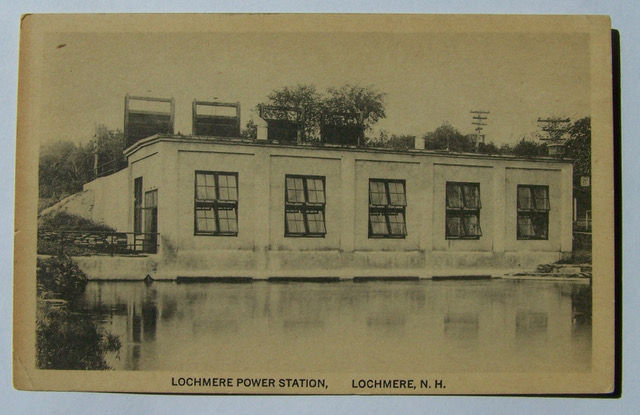History of the Silver Lake Area
The area of Silver Lake in the towns of Belmont and Tilton, NH has served the area with a strong historical presence. The lake has played a role as a food source for Native Americans, as a water resource for multiple area farms, and even as a top tourist destination along the railroad system. Formally known as Little Bay or Lower Bay, the history of the area has helped shaped the area as we know it today.
On the northern end of the lake, where the Winnipesauke River feeds into Silver Lake, can be found an NH Historical Landmark sign that details the importance of the lake and river area for the Middle Archaic through the Late Woodland time period. Near the present dam in Lochmere, this site served as an area for fishing. Early Native Americans would set up weirs to trap fish to be used as a food source. Part of the Lochmere Archeological District, this area is said to have been home to Winnipesaukee sub-tribe known as the Pennacook. This area also shows evidence of European settlers and industrialize life. Throughout the numerous archaeological sites, one can see how the river served as a source for food, travel, and industrialized water power. (NH Union Leader, 2017).
In the early 1800’s, Silver Lake was known as Little Bay and Lower Bay. The area was becoming known for its fishing and water resources. These resources brought farmers looking to water their cattle and as a supply for crops, as well as those wanting to view its natural beauty. D.C. Atkinson, a Sanbornton lawyer who build a large mansion on Atkinson’s Island, located on the north side of the lake by the current dam. Additional seasonal cottages and homes began to spring up around the lake. Gardners Grove became known for a two story band stand, as well as the Chowder House Restaurant. By 1889, the area of Gardners Grove, formally called Sawyer’s Cove, became a well known vacation destination. With the railroad system developed by B&M Railroad connecting Belmont and Tilton with other local areas as well as to cities such as Boston, MA, travel to the area steadily increased. The resort on Gardners Grove sported a hotel, cottages, bowling alley and roller-skating rink, in addition to the natural sports provided by the lake (Marden, 2006).





![Island[1].jpg](https://static.wixstatic.com/media/0f48d3_dba9cf9b6a7d46f4b248d7e84bca7c26~mv2.jpg/v1/fit/w_644,h_409,q_90,enc_avif,quality_auto/0f48d3_dba9cf9b6a7d46f4b248d7e84bca7c26~mv2.jpg)
![Lochmere RR bridge- date unk- maybe when builkding dam[1].jpg](https://static.wixstatic.com/media/0f48d3_99b196f67827438a8296797071e8ca07~mv2.jpg/v1/fit/w_644,h_424,q_90,enc_avif,quality_auto/0f48d3_99b196f67827438a8296797071e8ca07~mv2.jpg)

![camp9[1].jpg](https://static.wixstatic.com/media/0f48d3_7a1d9293cba0444c900c3f28b213c933~mv2.jpg/v1/fit/w_644,h_368,q_90,enc_avif,quality_auto/0f48d3_7a1d9293cba0444c900c3f28b213c933~mv2.jpg)
![camp8[1].jpg](https://static.wixstatic.com/media/0f48d3_c61ee8b4fd3946c4b0292ef6ee1147b3~mv2.jpg/v1/fit/w_644,h_411,q_90,enc_avif,quality_auto/0f48d3_c61ee8b4fd3946c4b0292ef6ee1147b3~mv2.jpg)
![camp4[1].jpg](https://static.wixstatic.com/media/0f48d3_2007e2c02a2c45f9bb0612ef3d97b9ad~mv2.jpg/v1/fit/w_644,h_422,q_90,enc_avif,quality_auto/0f48d3_2007e2c02a2c45f9bb0612ef3d97b9ad~mv2.jpg)


![camp2[1].jpg](https://static.wixstatic.com/media/0f48d3_438f7b6269d64596b124cfef7f7319f0~mv2.jpg/v1/fit/w_644,h_405,q_90,enc_avif,quality_auto/0f48d3_438f7b6269d64596b124cfef7f7319f0~mv2.jpg)
